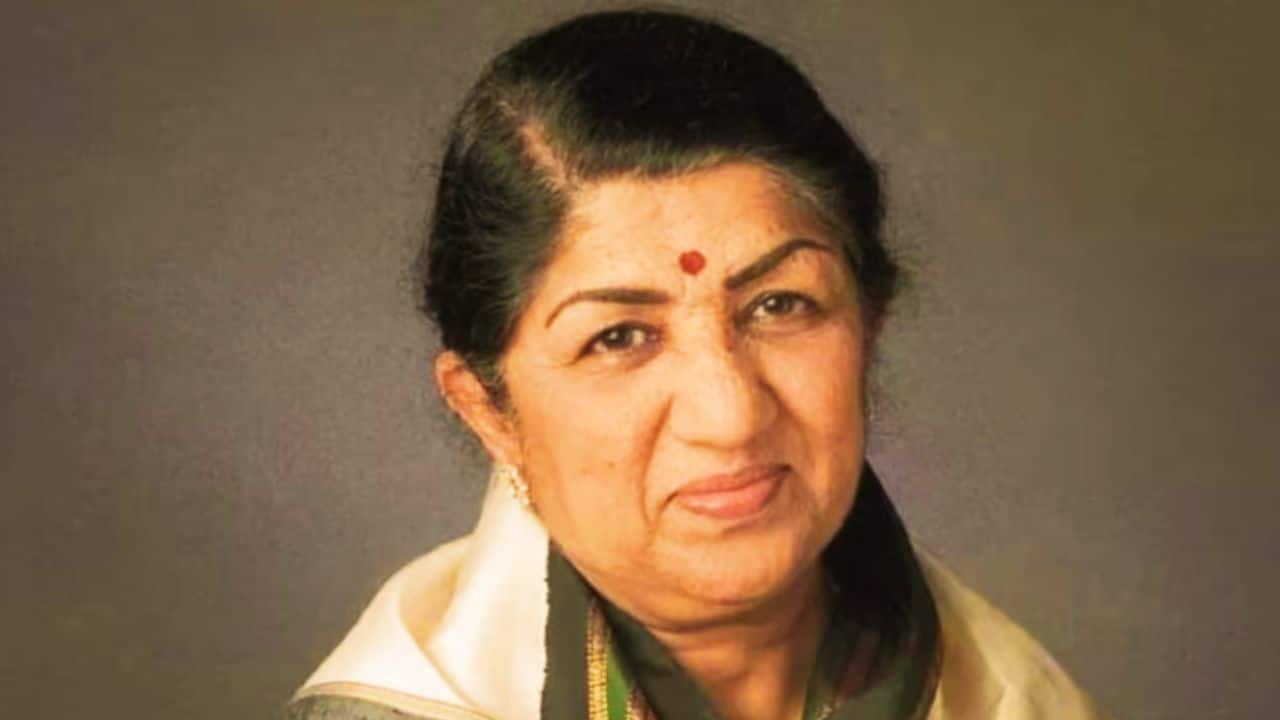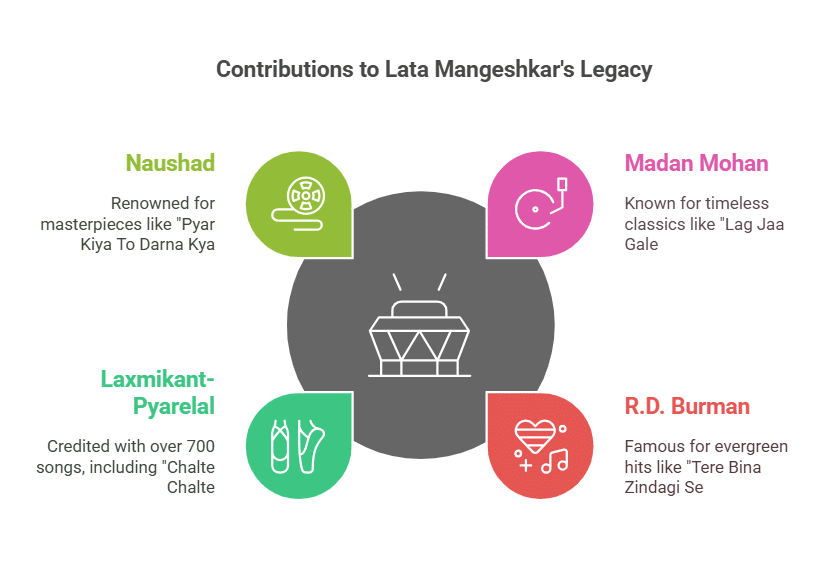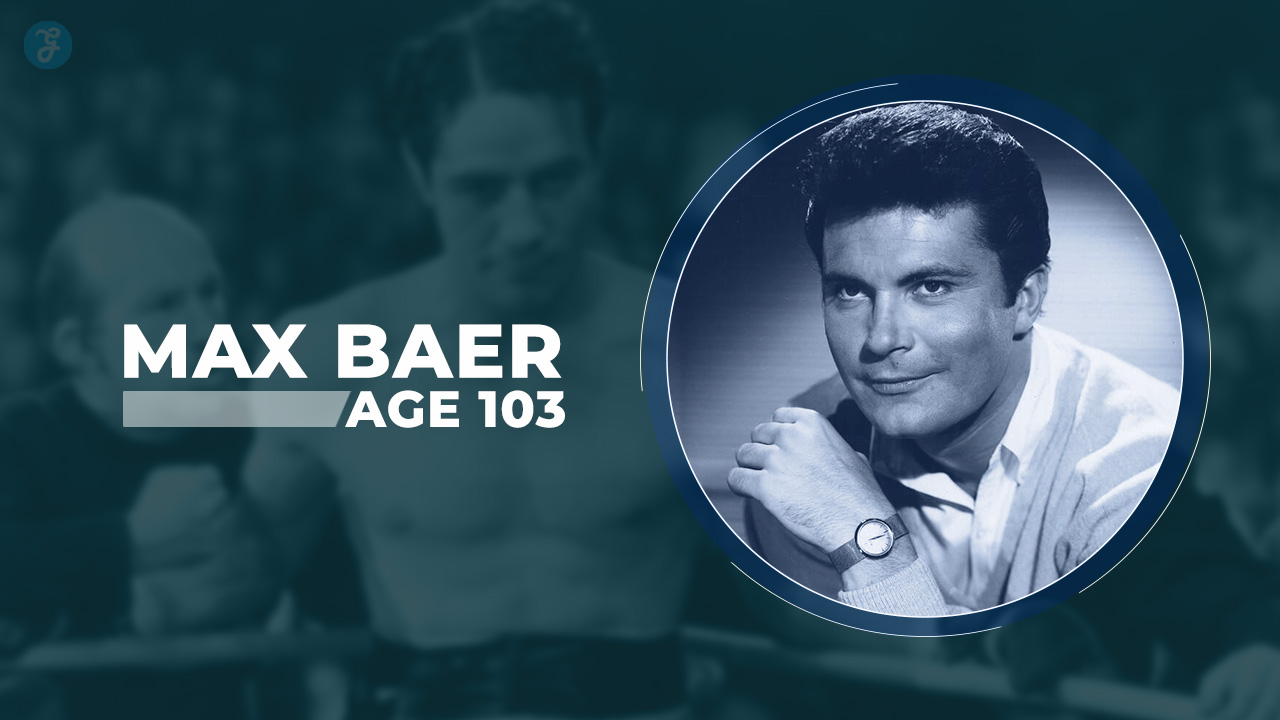Three years have passed since the legendary Lata Mangeshkar left the world on February 6, 2022, at the age of 92. Yet, her ethereal voice continues to echo across generations, providing solace, nostalgia, and an enduring connection to Indian cinema and music. Her contribution to the industry was monumental, and her impact remains irreplaceable.
From soulful melodies to patriotic anthems, her voice was a source of comfort, inspiration, and joy to millions worldwide. Known as the “Nightingale of India,” “Queen of Melody,” and “Voice of the Millennium,” she left behind a rich musical treasure trove that immortalized her in the annals of history.
The Journey of a Legend: From Humble Beginnings to Stardom
Early Life and Musical Upbringing
Born on September 28, 1929, in Indore, Madhya Pradesh, Lata Mangeshkar was the eldest daughter of Pandit Deenanath Mangeshkar, a renowned classical singer and theater artist, and his wife, Shevanti Mangeshkar. Music ran in her blood, and her father trained her in classical singing from a young age.
However, tragedy struck when her father passed away in 1942. At just 13 years old, Lata took on the responsibility of supporting her family, which included her four younger siblings—Meena, Asha, Usha, and Hridaynath Mangeshkar, all of whom later made significant contributions to the music industry.
In 1945, Lata moved to Mumbai to pursue a career in playback singing. Under the guidance of Ustad Aman Ali Khan, she mastered Hindustani classical music, which played a crucial role in shaping her unparalleled vocal range and emotive style.
Breaking into Bollywood: The Song That Changed Everything
Initially, Lata Mangeshkar faced rejection because of her thin and high-pitched voice, which was different from the then-popular deep, heavy voices. However, everything changed in 1949 when she sang “Aayega Aanewala” for the movie Mahal, starring Madhubala. The song became an overnight sensation, and from then on, there was no looking back.
A Glorious Career Spanning Over Seven Decades
Lata Mangeshkar’s career was nothing short of phenomenal. She worked with legendary music directors, lyricists, and playback singers, creating some of the most iconic songs in Indian cinema.
Notable Music Directors She Worked With
Lata Mangeshkar collaborated with almost every major composer of her time. Some of her most significant associations were with:
- Madan Mohan – Their collaboration produced timeless classics like “Lag Jaa Gale” and “Woh Bhooli Dastaan Lo Phir Yaad Aa Gayi.”
- R.D. Burman – Songs like “Tere Bina Zindagi Se” (Aandhi) and “Bahon Mein Chale Aao” (Anamika) remain evergreen.
- Laxmikant-Pyarelal – She sang over 700 songs for them, including “Chalte Chalte” and “Ek Pyaar Ka Nagma Hai.”
- Naushad – Their collaboration produced masterpieces like “Pyar Kiya To Darna Kya” (Mughal-e-Azam).
Most Iconic Songs
Lata Mangeshkar’s voice was versatile, and she sang across genres—romantic, devotional, patriotic, and melancholic. Here are just a few of her all-time classics:
🎶 “Lag Jaa Gale” (Woh Kaun Thi?, 1964) – A haunting melody that continues to stir hearts.
🎶 “Ajeeb Dastan Hai Yeh” (Dil Apna Aur Preet Parai, 1960) – A song that perfectly captures the unpredictability of life.
🎶 “Pyar Kiya To Darna Kya” (Mughal-e-Azam, 1960) – A rebellious love anthem from Indian cinema’s most epic historical drama.
🎶 “Tere Bina Zindagi Se” (Aandhi, 1975) – A melancholic yet soulful duet with Kishore Kumar.
🎶 “Luka Chuppi” (Rang De Basanti, 2006) – One of her later works, showcasing her ability to evoke deep emotions.
She continued singing well into the 21st century, proving that true talent is timeless and ageless.
Awards and Global Recognition
Lata Mangeshkar’s contribution to Indian music was acknowledged with numerous prestigious awards in India and globally. Some of the most notable ones include:
🏆 Bharat Ratna (2001): India’s highest civilian honor, recognizing her unparalleled contribution to music.
🏆 Padma Bhushan (1969) & Padma Vibhushan (1999): Two of India’s top civilian awards.
🏆 Dadasaheb Phalke Award (1989): The highest award in Indian cinema.
🏆 Officer of the Legion of Honour (2007): France’s highest civilian award.
She also won three National Film Awards, 15 Bengal Film Journalists’ Association Awards, and multiple Filmfare Awards, including a Lifetime Achievement Award.
Notably, after winning the Filmfare Award four times in a row, she requested that the awards be given to younger, upcoming singers, paving the way for new talent in the industry.
Beyond Playback Singing: A Passion for Music
Music Production and LM Music Label
In 2012, Lata Mangeshkar launched her own music label, LM Music, which focused on promoting independent music. She was deeply involved in music composition and production, showcasing her multi-faceted talent.
Personal Life and Philanthropy
Despite her fame, Lata Mangeshkar led a simple and private life, never marrying, and remaining devoted to her music and family. She was also known for her philanthropic efforts, especially in helping struggling artists and musicians.
The Final Years and a Nation’s Farewell
In early 2022, Lata Mangeshkar was admitted to Mumbai’s Breach Candy Hospital after contracting COVID-19. Despite initial recovery, her health deteriorated due to multiple organ failure, and she passed away on February 6, 2022, leaving the nation in mourning.
Her funeral was held with full state honors, and millions paid tribute, including the Prime Minister of India, global leaders, and countless fans.
A Legacy That Will Never Fade
Even though Lata Mangeshkar is no longer physically present, her voice remains immortal. Her songs are not just melodies—they are emotions, memories, and history wrapped in musical notes.
Her contributions to Indian cinema and music are unmatched, and her voice will continue to inspire, heal, and bring joy to generations to come.







































